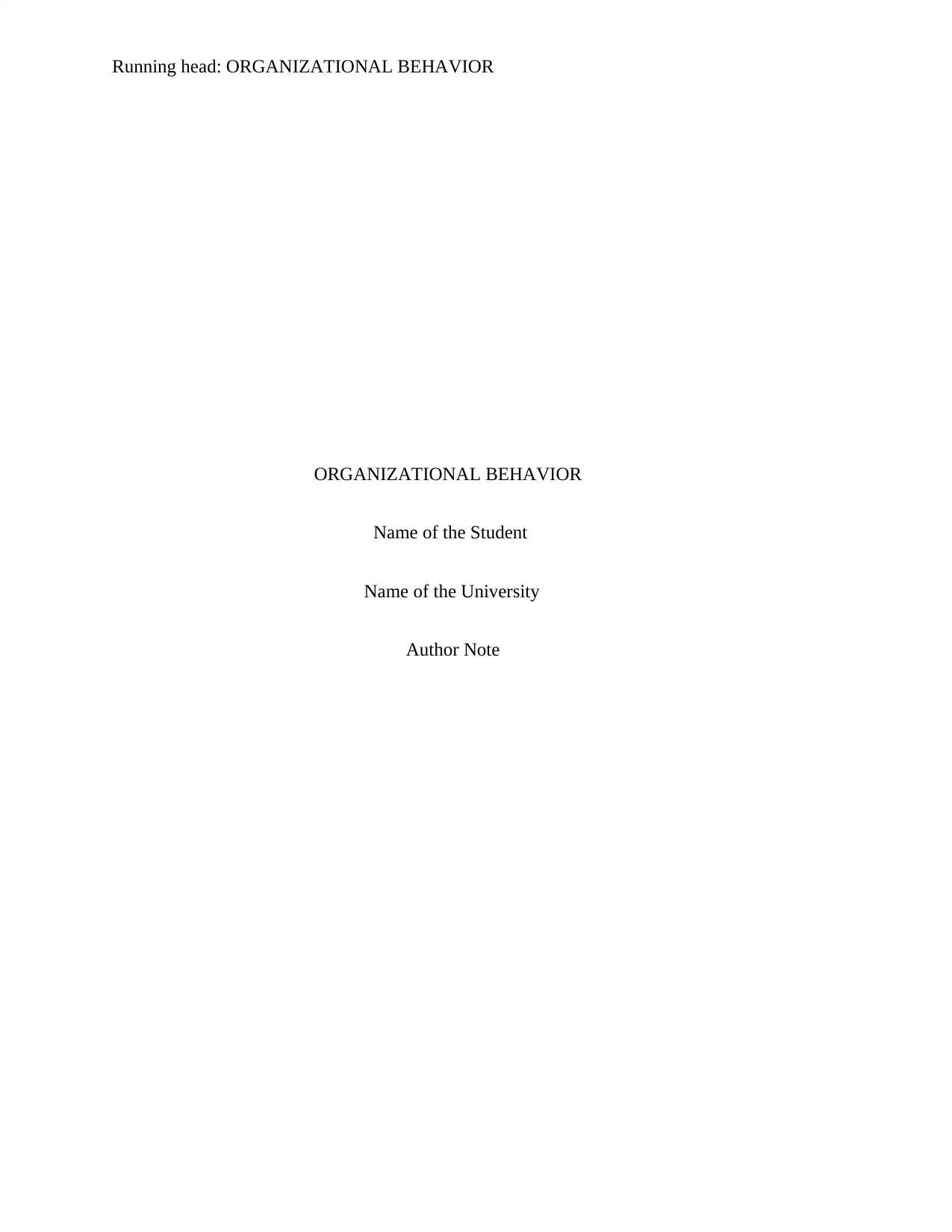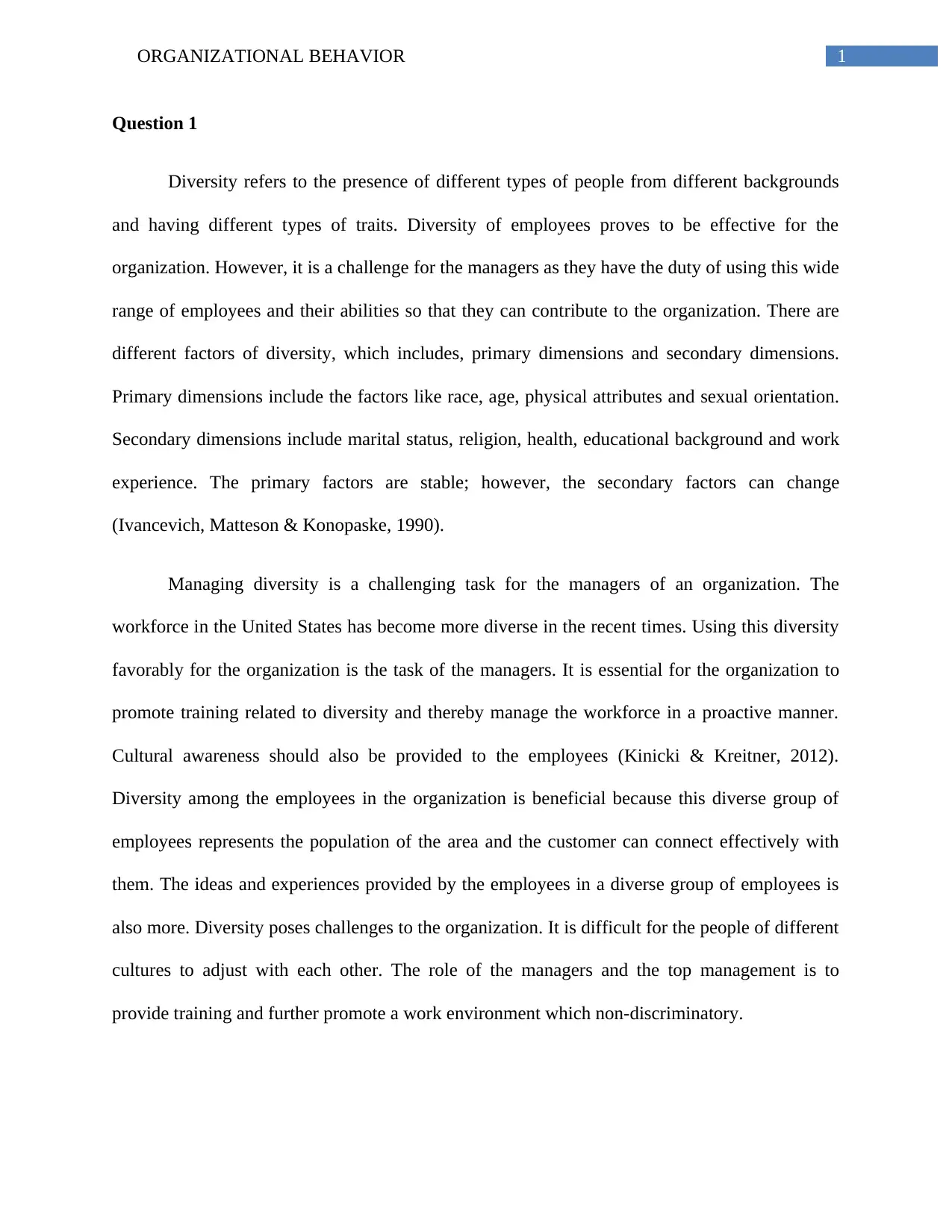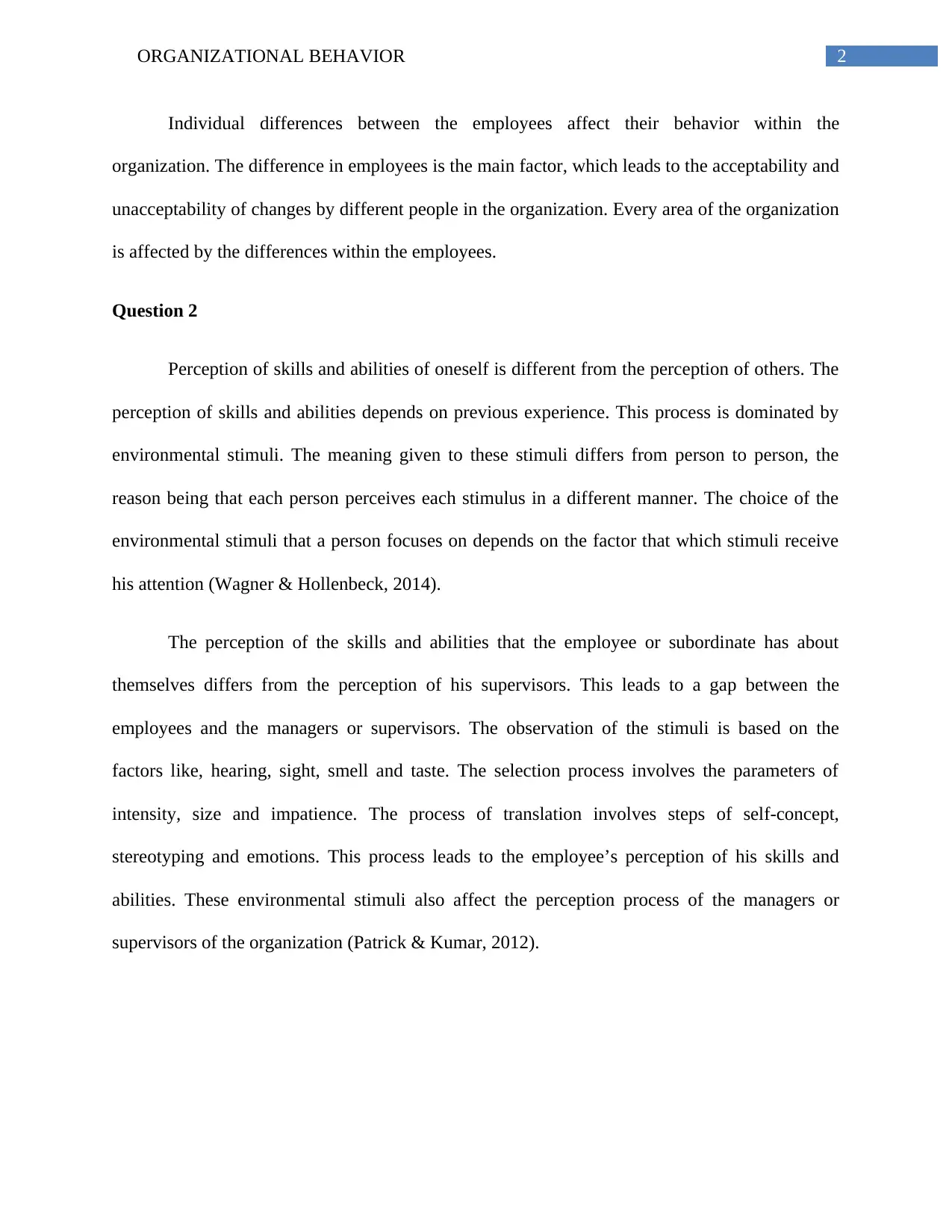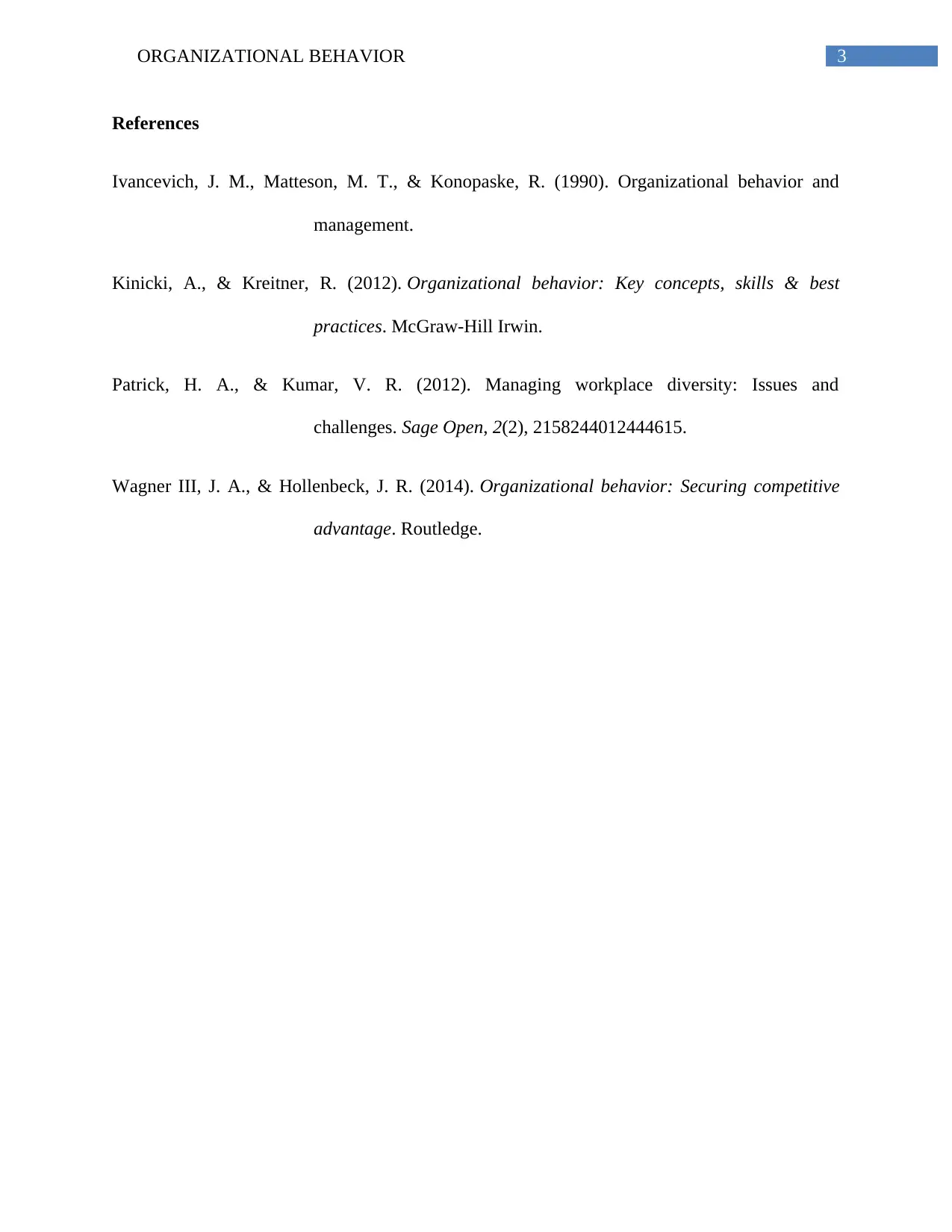OB Assignment: Diversity, Perception, and Organizational Impact
VerifiedAdded on 2020/05/08
|4
|701
|261
Homework Assignment
AI Summary
This assignment delves into the core concepts of organizational behavior, specifically focusing on diversity and perception within a workplace context. The solution begins by defining diversity, differentiating between primary and secondary dimensions, and highlighting its benefits and challenges for organizations. It emphasizes the role of managers in leveraging diversity effectively through training and cultural awareness. The assignment then explores the complexities of perception, contrasting self-perception with the perception of others, and how environmental stimuli and individual differences influence this process. It examines the impact of perception on employee behavior and the potential for gaps between employee and managerial views. The assignment concludes by referencing key scholarly sources to support the analysis of these critical organizational behavior elements, providing a comprehensive understanding of how diversity and perception shape workplace dynamics and management strategies.
1 out of 4











![[object Object]](/_next/static/media/star-bottom.7253800d.svg)